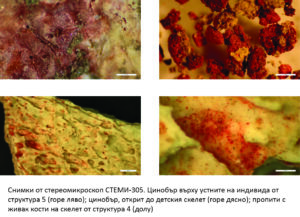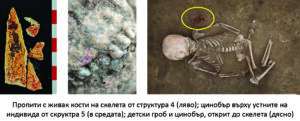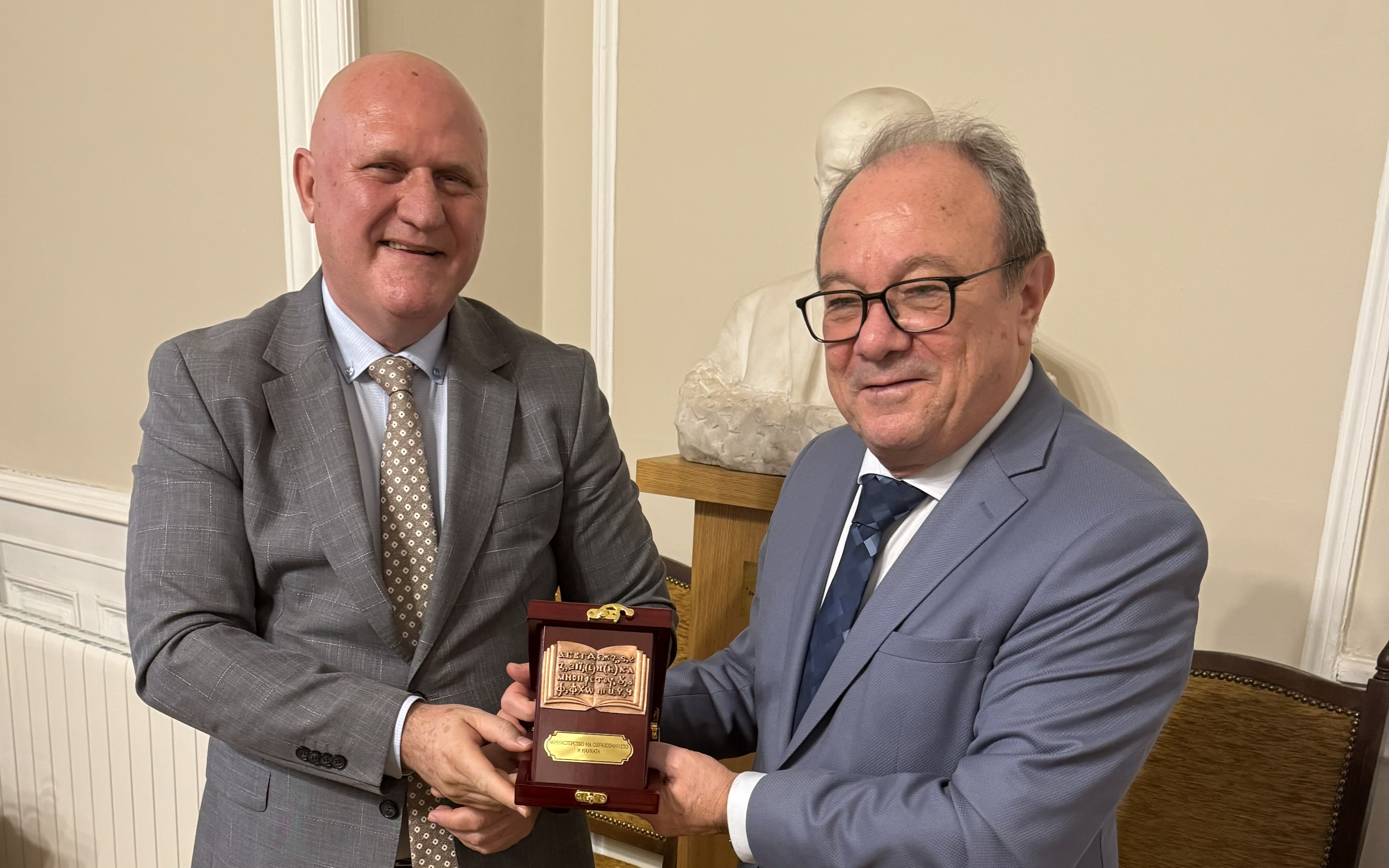A significant discovery was made during the rescue archaeological excavations of a burial mound in the village of Kriva Bara, Vratsa region. The excavations were financed by the National Archaeological Institute with Museum under a contract with Bulgartransgaz EAD for the preservation of the archaeological heritage during the construction of a gas pipeline connecting the underground gas storage Chiren with the existing gas transmission network. They were conducted under the supervision of Assoc. Prof. Dr. Stefan Alexandrov (NAIM – BAS). The team members are Prof. Piotr Wlodarchak (Institute of Archaeology and Ethnology – Cracow) and Dr. Rosica Manova (expert restorer). Six burial structures from the first half of the 3rd millennium BC related to the earliest stage of the formation of the Thracian ethnic group were studied.
One of the most significant scientific results of the study of the mound was the discovery of cinnabar used in funerary practices. Already during the field survey in three of the six graves an unusual staining of the bones with bright red pigment or the placement of such pigment in the grave pit was noticed. The samples were analyzed by Prof. Dr. Bogdan Ranguelov and Asst. Prof. Dr. Stela Atanasova-Vladimirova in the Electron microscopy and X-ray diffraction laboratories of the Institute of Physical Chemistry with equipment purchased and maintained under the INFRAMAT project. Reporting and summary of the data from the study carried out by Dr. Rosica Manova show that the red pigment used in one of the grave complexes (Structure 7, 3-4 year old child) is a mixture of red ochre and cinnabar. The ratio of mercury to iron is 10.97 to 84.36 because the pigment was extremely difficult to obtain in antiquity and was used sparingly. A red mercuric sulfide was recorded in the bones of an adult individual (Structure 5) with a quantitative ratio of mercury Hg 2.43 which was the result of either sprinkling the body with cinnabar or ritual ingestion of the pigment during life. In the grave of another adult individual (Structure 4), the lips of the buried were stained with cinnabar. The highest percentage of mercury – Hg 14.8 was also recorded here.
The use of the cinnabar pigment in the past is of utmost importance as according to researchers it indicates the level of civilizational development of ancient societies. Its study worldwide is increasingly intensive, with the map of its use and path in the earliest periods being continuously added to. Cinnabar belongs to the group of mercuric paints containing various mercuric compounds in their composition. Its colour varies from bright scarlet to brick-red, its intensity depending on the method of preparation. It tends to darken when exposed to light but regains its former colour in the dark. Its regenerative properties were well studied as early as antiquity and probably for this reason it was used as a symbol and even a sign of rebirth. Cinnabar is also considered a valuable ingredient in many medicinal remedies. Its earliest documented use is in Chatal Hoyuk – Anatolia (Asia Minor) where it was used in cult buildings and dates back to the VІІІ – VІІ millennium BC. In Europe in the VI – IV millennium BC, cinnabar was used in funerary practices on the Iberian Peninsula. In the Vinča culture (present-day Serbia), between 5300 and 4500 BC, cinnabar was found in small quantities in pottery. In later periods it was used by the ancient Egyptians, Greeks, Phoenicians, Etruscans, Romans, etc. In the Bulgarian lands, its earliest use has so far been associated with the Thracians as it is attested in funerary practices, in cult sites, in the colouring of stelae, in murals, and especially in the upbuilding of tomb beds and entrances to cult sites such as Kazanlak, Aleksandrovo, Starosel, Hisarya, etc. During the Middle Ages, it was found in iconography, murals of temples, miniature paintings, in the XI – XIV centuries it was part of Slavonic manuscripts in headlines and initial letters, and during the National Revival – in secular oil paintings.
In Europe, deposits of natural cinnabarite (ore) have been recorded in Spain, Austria, Ukraine, Serbia, North Macedonia, Romania, Türkiye, Germany, Greece, etc. In Bulgaria, the closest deposits to the mound under study are at Chiprovtsi, Vratsa and Dimovo. In order to find the source of the cinnabar used in Kriva Bara, it is necessary to compare the results obtained with the available databases of studied cinnabarite deposits in the country and abroad.
The dating of the burial complexes in the period 2900 – 2600 BC defines the cinnabar found in the mound as the earliest in the Bulgarian lands. The team is convinced that analyses of pigments with similar characteristics from other such studied complexes from Bulgaria, which are forthcoming, will show its widespread use in our lands as early as IV – III millennium BC. Perhaps of greatest scientific value, however, is the fact that the child’s grave from Kriva Bara is only the third in the world in which cinnabar was used in the burial of a child.
The presented results show once again the usefulness and necessity of collaboration between the different institutes in the framework of BAS. The data from the study will be published in the prestigious journal Praehistorische Zeitschrift (Germany).







